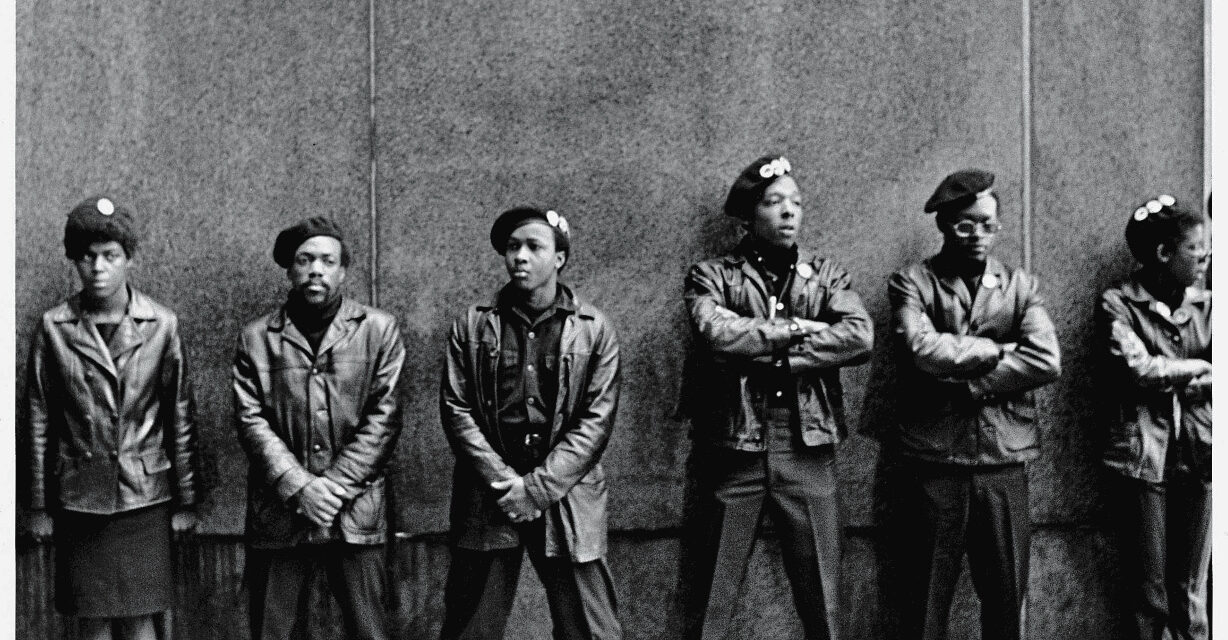
Fashion has always been political, ; it provides opportunities to take a firm stance in socioeconomic movements, whether subliminally or intentionally. This ranges from the bespoke suiting of the Civil Rights Movement and the revolutionary militant aesthetics of the Black Panther Party to the t-shirts that defined the Black Lives Matter movement. More specifically, the fashion accessory has often been used as a powerful tool for messaging (constructive or destructive), political campaigns, protests and countercultural movements.
Think of the hanky code of the ’70s and ’80s, in which members of the LGBTQ+ community used handkerchiefs and bandanas to signify their identity safely. We could never forget Beyoncé’s homage to the Black Panther Party through leather garb and berets at the Super Bowl 50 halftime show.

 Beyonce. Image: Kevin Mazur/WireImage for Getty Images.
Beyonce. Image: Kevin Mazur/WireImage for Getty Images.
Just recently, representatives Cori Bush, Rashida Tlaib and Summer Lee donned the Palestinian keffiyeh in a show of solidarity with Gaza at the State of the Union earlier this year. The notion that clothing and accessories can serve as vehicles for revolutionary protest may appear insignificant. Yet, it has been a notable and enduring feature of civilization throughout history, pop culture and the zeitgeist.
This year marks a key political cycle. We have battleground primary local elections happening across the country, the continued fight for women’s autonomy and reproductive rights, defending the Affordable Care Act and protecting departments like the Department of Education. Oh, and then there’s the general election in November. Through it all, we can expect politicians, fashion brands and people at large to utilize the power of fashion to bring light to issues, support their candidates and express their political ideologies. That campaign slogan hat, those earrings championing “My Body My Choice,” that tote bag that calls out senseless police brutality, etc.
As Democratic presentational nominee, Vice President Kamala Harris takes on the next 87 days, we’re prepared to see the myriad of ways both her campaign and her supporters alike utilize the power of fashion through hats, pins, scarves, jewelry and more to spread her message. Her 2021 election gave rise to a slew of Esty shops and sellers designated to merch, signaling the impact of her win. Her affiliation with the Alpha Kappa Alpha organization is sure to see an uptake in accessories over the remainder of her presidential campaign run.
On the other side of the aisle, former President Donald Trump’s supporters continue to weaponize their political merch, the distinctly red and often parodied “Make America Great Again” hats and now ear bandages, to convey his messaging. Irrespective of the consequences, political and social accessories carry an iconography with them.
It’s often said that fashion is but a mirror of its times. Below, we examine the effectiveness of fashion accessories, from black berets to pins, in representing political ideologies.
Berets
Co-founders of the Black Panther Party, Huey P. Newton, Bobby Seale and other members often wore black berets as a symbol of Black empowerment and resistance against racial oppression.

 Huey P. Newton and Bobby Seale . Image: Ted Streshinsky/CORBIS/Corbis for Getty Images.
Huey P. Newton and Bobby Seale . Image: Ted Streshinsky/CORBIS/Corbis for Getty Images.
Pins/Brooches
Shirley Chisholm, the first Black woman elected to the U.S. Congress often wore brooches and pins, including those symbolizing her trailblazing role in politics.

 Image: Shirley Chisholm. Leffler/Library of Congress/Interim Archives for Getty Images.
Image: Shirley Chisholm. Leffler/Library of Congress/Interim Archives for Getty Images.
Jewelry
Vice President Kamala Harris is often seen wearing pearl necklaces, a nod to her Alpha Kappa Alpha Sorority, Inc. heritage, symbolizing sisterhood and service.

 U.S. Vice President Kamala Harris. Image: Andrew Harnik for Getty Images.
U.S. Vice President Kamala Harris. Image: Andrew Harnik for Getty Images.
Source


